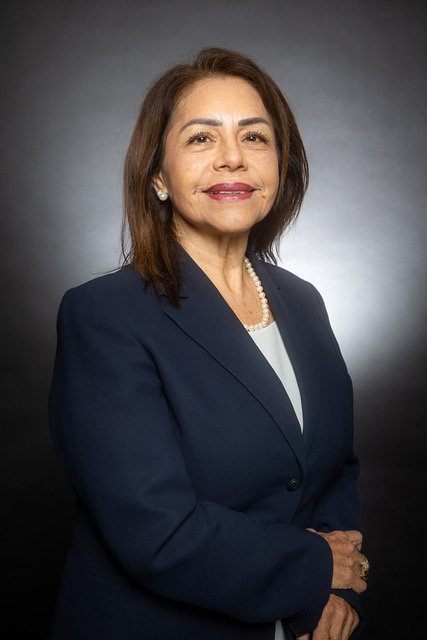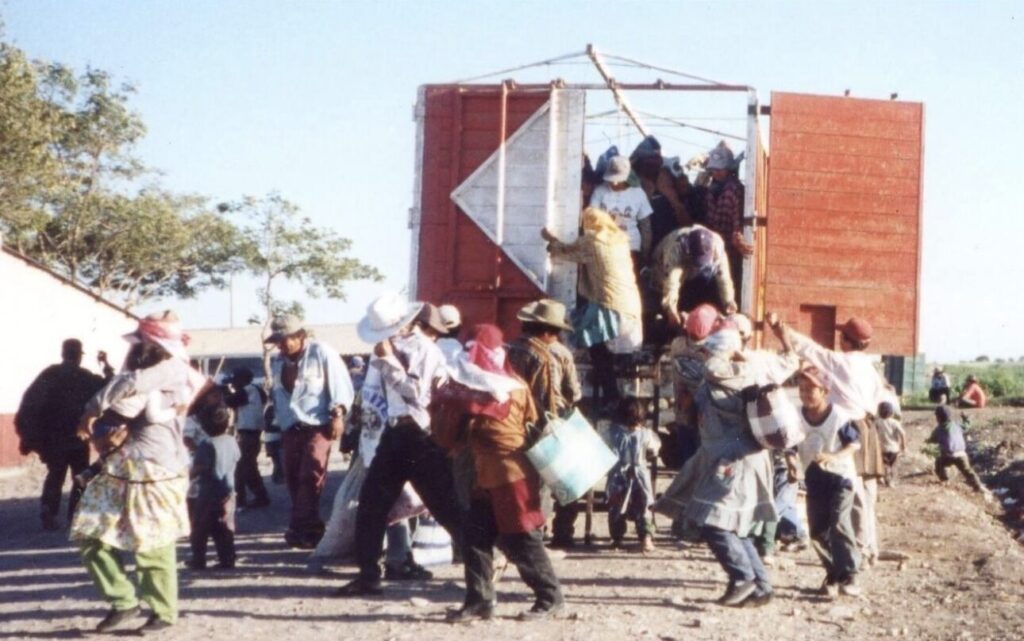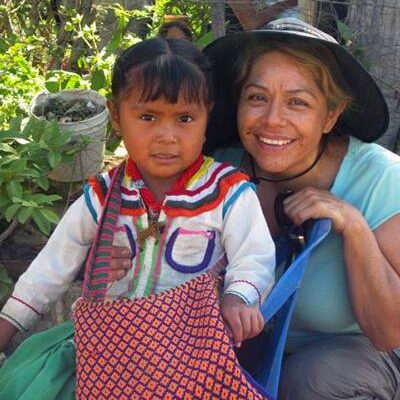Meet the Founder
Maria E. Lopez
 Maria was born in an upper middle-class family in Mexico City. In her teens she had the opportunity to go study English in Los Angeles, California. Having heard many good things about L.A, when she arrived, she found herself to be totally disappointed. It was hard to believe that the Los Angeles she was seeing with her own eyes was not the glamorous, cosmopolitan, modern place she had seen on TV. Another thing that was very surprising to her was to see that many people from the countryside of Mexico were in Los Angeles! She recognized them because they were wearing straw hats and typical clothing from different regions in Mexico.
Maria was born in an upper middle-class family in Mexico City. In her teens she had the opportunity to go study English in Los Angeles, California. Having heard many good things about L.A, when she arrived, she found herself to be totally disappointed. It was hard to believe that the Los Angeles she was seeing with her own eyes was not the glamorous, cosmopolitan, modern place she had seen on TV. Another thing that was very surprising to her was to see that many people from the countryside of Mexico were in Los Angeles! She recognized them because they were wearing straw hats and typical clothing from different regions in Mexico.
She remembered these people from when she was growing up. They were the people who were the family’s housekeepers and house servants. No one paid attention to them, and they behaved as if they did not want to be noticed. They were always quiet – they were there but not there – it was as if they did not exist. They were the lowest of the lowest. She despised them just like everyone else did. To her, they were ignorant, uneducated and insignificant. Most of them did not know how to read or write and some of them did not even know how to speak Spanish!! And now, here they were in Los Angeles, as was she. Why? Who are they? How did they get here? Were they following her?
It was not until many years later that she learned who these people were. Maria was taking a college course titled “Perspectives for World Missions class” which was about Indigenous Peoples around the world, their cultures and religions. AHA! That’s who they are, the Indigenous Peoples of Mexico! An invitation flyer to a mission trip to the agricultural camps in Mexico was passed around. At this point, she became very intrigued about the Indigenous Peoples in Mexico. She thought, “What a coincidence!” She had been wondering about these people for some time, and now she had the chance to find out who they really were.
A Life-Changing Experience

It was during the month of February that Maria ventured to Culiacan, Sinaloa, in the central region of Mexico. Thousands of Indigenous People from south Mexico migrate to work in the agricultural camps. They harvest the vegetables we consume on a daily basis. At the missionary base, she was assigned a bunk bed in a very small bedroom with two Indigenous young women. To her surprise, she was sharing a room with “those people”, the ones that were my house servants at one time. She did not know what to think or what to say. She felt uncomfortable but she tried to be nice and not show her disgust.
Maria could hardly sleep that night. She kept wondering what else was going to happen tomorrow when she would visit a camp where the Indigenous People live. There were so many emotions running through her mind, she did not know what to expect anymore. She had a feeling that something very important was going to take place inside of her.
Maria was part of a small team that went to visit a camp. She recalled someone saying, “You are not going to believe what you are about to see, just watch, do not say anything.” They waited for the workers to come back to the camp. Someone said, “Here they come, here they come! Get your camera ready but don’t let them see you taking pictures.” She looked out the window with her camera ready – she could not believe her eyes. A huge pick-up truck stopped in front of the entrance of the camp. The driver got out of the truck and opened the back doors; it was full of people, and they there were! There were men, women carrying their infants on their backs and children coming out of the back door of the truck. They were coming back from working in the field, she was told. She looked at their faces. They looked tired, thirsty, their faces and their clothes were full of dirt, and some of them had their heads and faces covered. Their hands were green from picking tomatoes. She was in shock. She will never forget their facial expressions; they looked poor and oppressed, hungry and thirsty. She could not say a word; she watched them for a few minutes and then felt the tears coming down her face. She felt their pain, their misery, their abuse, their neglect, their hunger, their thirst, their oppression. She could not stop crying, her heart was hurting for them. She finally knew who these people were. They were her people, a part of her.
A New Heart for the Indigenous
 Maria took lots of pictures; lots of mental pictures too, so many, in fact, she could not sleep that night. She kept seeing their eyes full of pain and despair, without hope.
Maria took lots of pictures; lots of mental pictures too, so many, in fact, she could not sleep that night. She kept seeing their eyes full of pain and despair, without hope.
When she woke up the next morning, she looked around the room and she saw the two young women staying in the room with her, they looked at her and smiled. She asked them if they used to work in the camps, and they said yes. Her heart felt a tremendous amount of love and compassion for them. She sat on the bed crying again, she realized that she had judged them and their people; she had despised and criticized them. She felt sorry that she had done this. The young women got closer to her and put their arms around her while she was still crying. Maria could not say a word. She finally looked at them and said, “I am so sorry that I judged you, I am so sorry that I criticized you and even despised you and your people. Please forgive me.” They responded, “Of course,” with a big smile on their faces and gave her a big hug. Maria knew that the purpose for being there was to learn a big lesson: not to judge people by the way they behave or look, but instead, accept them and respect them as they are. She also felt a lot of compassion and love, the love of God for them
It has been more than twenty years since Maria had this experience. She ended up moving to a small village to minister the love of God and bring hope into their lives. The Indigenous People have become her friends and family. She considers it an honor to serve and be accepted by them. She has learned to love and treat them with love, respect and dignity.
